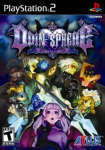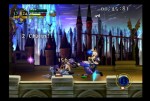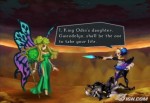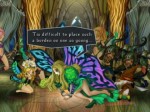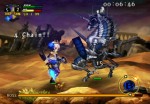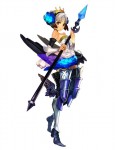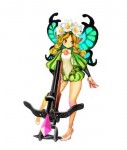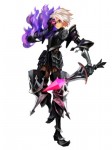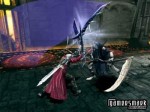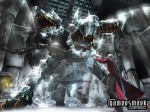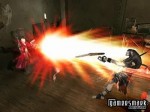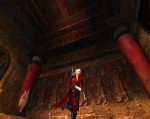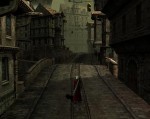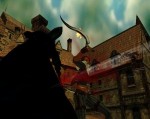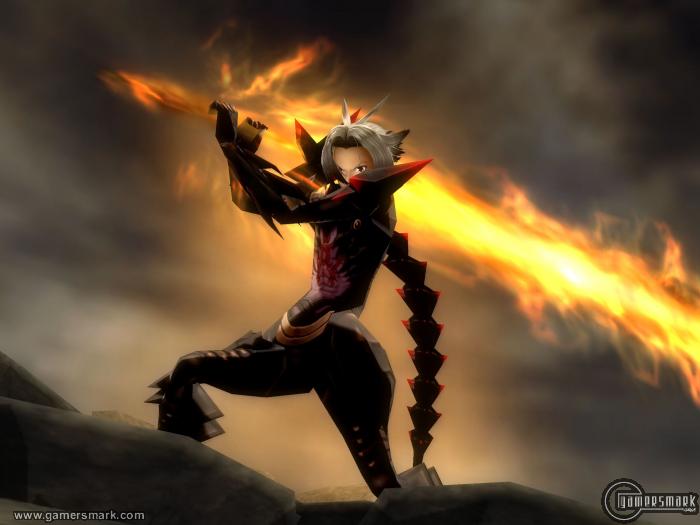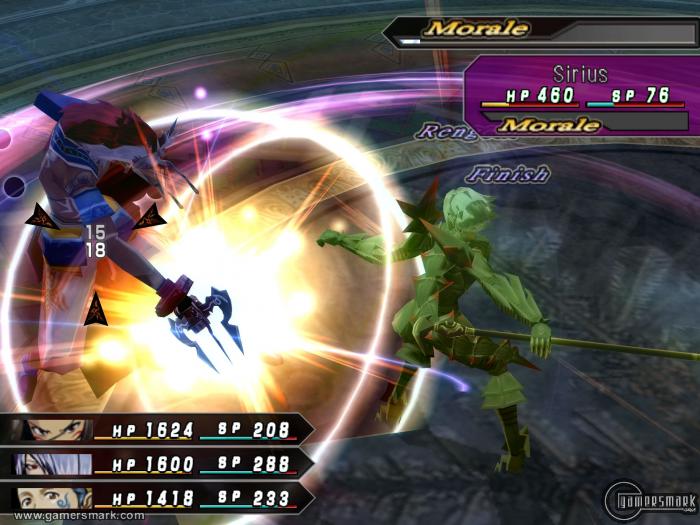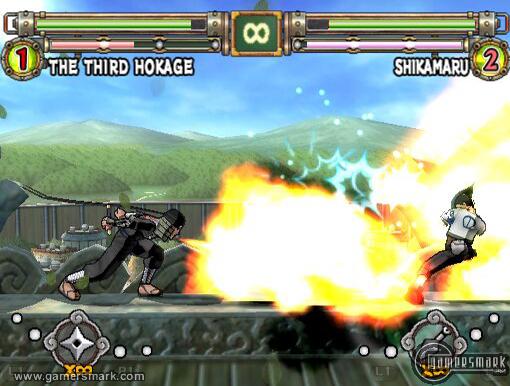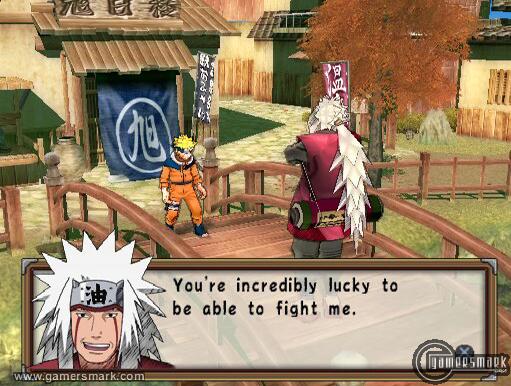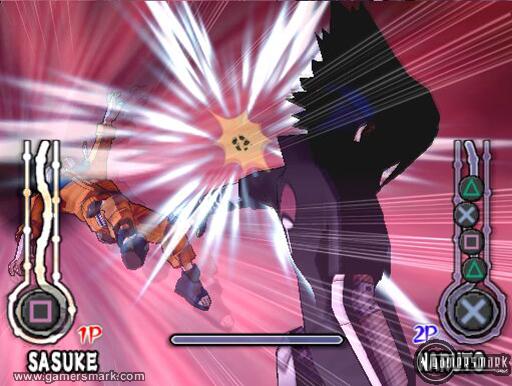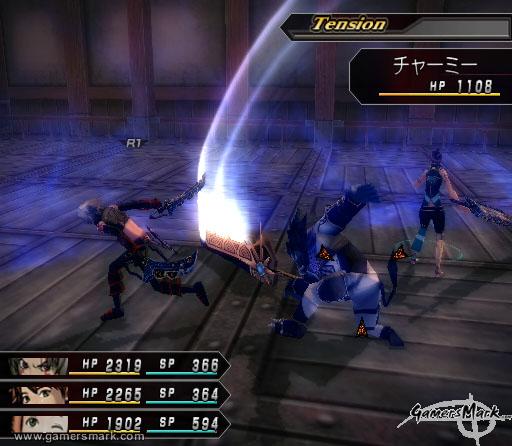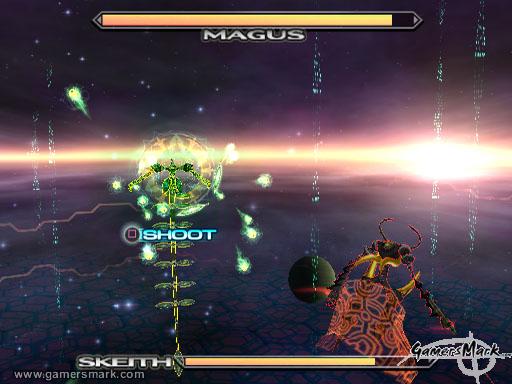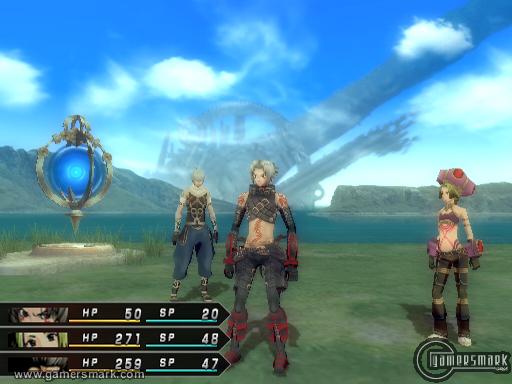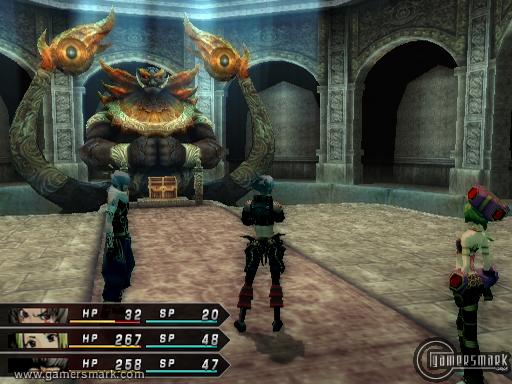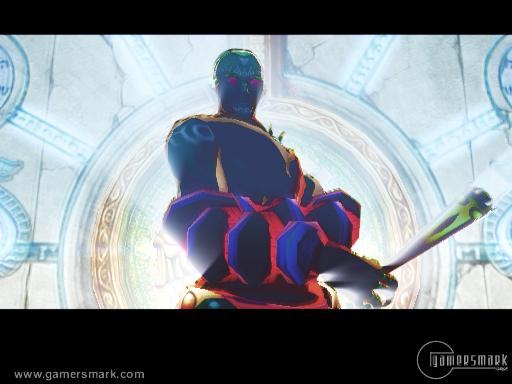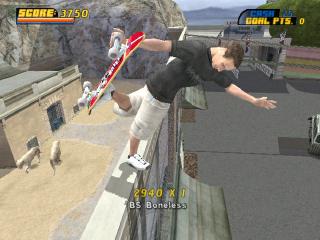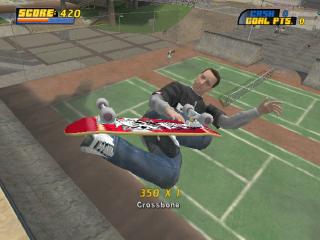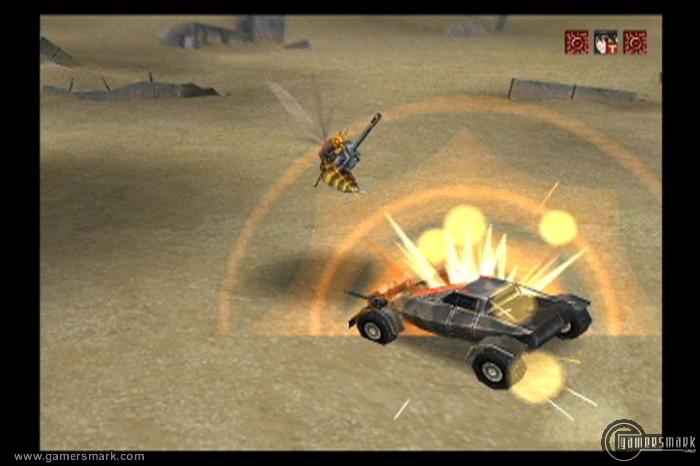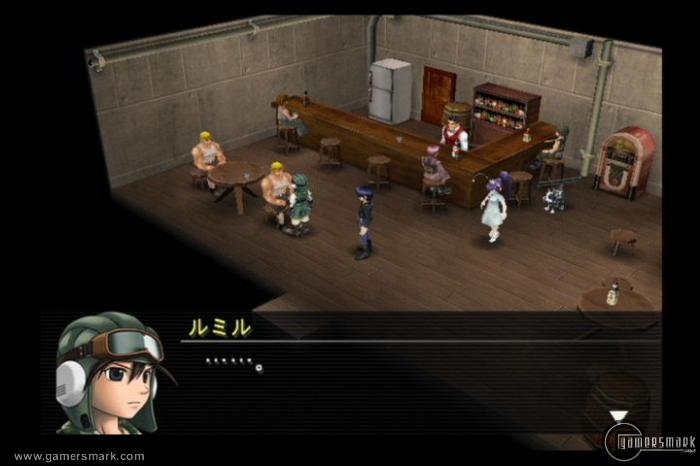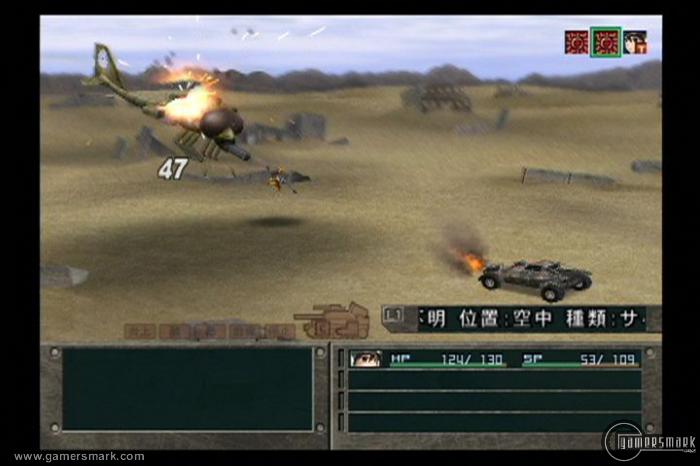Developer: Vanillaware | Publisher: Atlus || Overall: 9.0/10
Warning: This review has spoilers since the game is like 5 years old at this point.
If ever a game has attempted to be Shakespearean in its story delivery, it is Odin Sphere. Odin Sphere is a side-scrolling action beat-em-up game starring five different playable characters. The story and how it is presented is very much the forefront on what is “unique” about this game, but the mechanics involved are also very robust and allows for a challenging experience whether or not you want one.
Without doing much research or knowing much about the game beforehand, if you dive right into it, you’ll probably be a little bit confused. Confused because you start out the game as a little girl in the attic of the house she presumably lives in. You’ll see a book, and then you’ll see a cat named Socrates. Nothing really happens unless you start reading the book at which case you’ll begin the story of Gwendolyn, the daughter of the Demon Lord Odin.
My personal experience with the game began 2 or so years ago. I had played the game quite a bit but never actually beaten Gwendolyn’s storyline, so when I had actually gotten through her book, it was quite intriguing to see the oh-so-dramatic events and the ending for Gwendolyn.
For the first 5 books, you will play characters who are somehow connected to the royalty of the world of Erion. The five different characters go through the events of the story from their points of view, and will occasionally fight or interact with other characters you have controlled or will control later on. Needless to say, the story itself is very non-linear and if you stick with it you will see an interestingly multifaceted story unveil before you. The only thing that detracts from this are the boss battles in which you defeat bosses in different areas or under different circumstances, but still the same fight when all is said and done. It feels kind of weird “killing” or severely debilitating the same dragon repeatedly, considering he had just been defeated or will be defeated again by another one of the characters you play in what seems like a day or two story-wise.
Besides the blatant “replay the same game 5 times” aspect of the game, which you really kind of do, they do toss in different mechanics for each of the characters you play with. The different weapons and characters all have unique and different feels, and it keeps the gameplay more-or-less fresh as you go and play through the story again. As for the mechanics itself, you will mostly be hitting the Square button over and over. Jumping and the direction of the analog stick while you press the Square button affect the type of attacks you do, and it is a pretty standard combo fighting system. There aren’t any huge combos to pull off, but most of the challenge in the game comes in the strategy in which you defeat the enemies that are laid out before you in each section. Almost every character is able to parry attacks and perform knock-backs. Gwendolyn, using a spear, can block and glide around the map. Cornelius, using a sword, can block attacks and do a spinning attack in mid-air. Mercedes, using a bow, can fly, charge her attacks, and use a unique magic spell. Oswald can activate shadow powers and make all of his normal attacks hit around twice as hard and twice as fast for a short period of time. Velvet, using chains, can attack all around her, charge an attack and swing across the map. Using each individual character’s strengths to your advantage is vital to defeating the challenges presented.
Each character has the same repertoire of magic “Psypher” attacks, but they are earned in a different order. The essential purpose of these Psypher magics are to make the game easier for you — you will need to use them to defeat tons of enemies or defeat a boss you just had enough of instead of just spamming your basic attacks. Basic attacks can also only be spammed to a certain point, as they are limited by a POW gauge. The POW gauge will decrease as you use your basic attacks and then you’ll have to run around or stop attacking for a few seconds for the gauge to fill again. If you fully deplete the POW gauge you will stun yourself for a good 4 to 5 seconds waiting for the gauge to fill to 100% again before being able to move. A lot of the strategy you employ during the harder fights in the game rely on a careful balance of your attacks and trying to be conservative in your spams. The game mechanics are fairly engaging and can be quite fun despite its simplistic approach.
What makes the game more of an Action RPG is obviously with its leveling and, to a lesser degree, alchemy system. Your Psypher and your Character each have independent levels. The main way to increase your levels is by the way you use Phozons. Phozons are magical orbs that appear after you defeat an enemy. You can choose to absorb the Phozons into your Psypher weapon or put a seed into the ground and after a certain amount of required Phozons, pick the fruit (or meat) that grows out of the ground. You also have a limited storage menu so you’ll have to constantly be managing it as you play through each section. The food that you can buy or grow in the game can also be used between levels to increase your hit points and gain more experience at a more efficient rate than just eating the food alone. When you are able to access the Pooka Village, you can visit either of the two restaurants and have them cook up something using your food and adding some permanent hit points. Using these restaurants are vital to increasing your characters stats — the natural hit point increases from leveling up are about half the amount you actually want to have by the end of each book… at least on Easy mode.
One of the things Odin Sphere has going for, or against it, is its difficulty. I started playing the game on normal, and ended up dying so many times on shitty trash (non-boss) enemies that I changed the difficulty to Easy. It was more-or-less smooth going from there, but there were still some tricky bosses that made me question whether or not I was still on Easy. The bosses at the end of the game were also quite difficult for an “Easy” setting, which makes me wonder how hard the Normal and Hard settings actually would be. It really made me question what kind of enjoyment people get out of dying over and over on games like this… it really isn’t that much fun to keep dying, but to each their own, I suppose.
The visuals are definitely one of the other unique aspects of this game. Vanillaware is known for their awesome-looking 2D hand-drawn visuals that stray from what you normally see in gaming today. They also like to draw chicks with huge boobs and sexy legs and little to nothing to cover it all. Girls with less-emphasized features also exist in the game, so it’s not that “one-sided” as far as it goes. Suffice to say, all of the chicks — even the queen of death — are all banging and who wouldn’t want to see these chicks getting ass-rammed with their boobs flopping around? There’s a lot of provocative fan-service animations and poses the female characters in the game do, as well.
The art style is also interesting because you will see giant men who have toothpick legs. Not all of the men in the game are that disproportionate, and there are a couple of different mythological races in the game such as Dwarves and Fairies. Most of the game is influenced by Norse mythology and mixes in with normal fantasy, and the art style definitely goes with what is going on, as it is essentially a “storybook” being read by the little girl in the attic every time you start up the game.
The point of the game probably won’t culminate into much of a cohesion until the end of the game, which all of the events that transpire in each individual character’s book leads to. The last phase of the game is a series of five difficult boss battles, and provided you leveled each of the characters appropriately and they have enough items to assist them in the final battle, you will choose one character to fight each boss up to the game’s ending.
The game begins to split its path when you choose the correct or “incorrect” character for a particular end boss. Each boss is to be paired against one of the characters you have played as “the prophecies state” that you collect while playing the preamble. There is a satisfying ending as long as you choose the correct characters, but there’s not a whole lot that is “plainly explained” in the context of the story. The purpose of the girl, which I believe her name is Alice, at the beginning is more-or-less justified, giving the story, which you thought as a “child’s story” to be something more of a sad, dark history of the world she lives in. When Cornelius and a Pooka-cursed Velvet appear in the attic she has been reading her books in, it affirms that the books her “grandpa loved to read so much” actually were real after all. The set of five books, including the Armageddon and Wheel of Fate books combined ends up being the “Odin Sphere” book written by an unnamed, unknown character whom we can only assume the identity of. It can be also be inferred that the writer is “you” since you were there at all of the events that had transpired.
I sort of wish that they would have added a little bit more of an explanation on certain things that were left open to interpretation in the game. The question behind who wrote the Odin Sphere book series is probably the biggest question, and how Cornelius and Velvet affect the world after they turn back into humans, and where the people of Valentine originally came from, and what the actual origin of the mechanically alien-like Cauldron is. The total rounding up of all the loose ends wouldn’t have taken much effort, considering they were more-or-less extraneous aspects of the story that were still interesting.
I spent a good 40 hours or so on this game, and I probably would have liked to spend about 10 hours less than I did, having to beat the same bosses over and over, in what seems like a forced fashion. They could have, and should have trimmed any of the “forced” boss encounters, especially considering you don’t even get any experience from those battles anyway. Once you complete a book, it’s nice being able to replay the story from the beginning, but all of the locations you opened up through your first time through should have been open as well so that people trying to grind up levels a little bit for the Armageddon didn’t have to go through the same stuff again.
The inventory UI, while having an interesting take, was probably the most frustrating thing about the normal gameplay. I wished so many times that I could open the bag view and use all my items there rather than having to use it through the swirly-circle-single-bag-at-a-time interface. I would lose items many times and just go through each of my bags not remembering or not knowing or not seeing where something went. Once all of the books opened up and I was grinding levels for the Armageddon, there is no way to change books without resetting the game entirely — that seemed like an oversight on the part of the design team.
Odin Sphere can be a real challenge to get through and see it through, but I feel like it’s worth it, since what the game set out to do is probably not going to be done again. I loved the art, I loved the way the story was told, and the game play was a good stylistic compliment.

